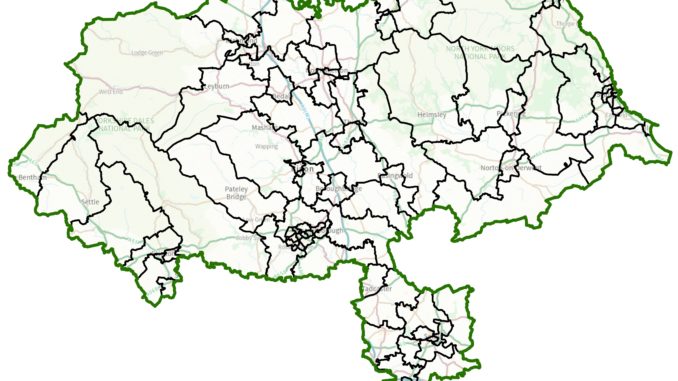
North Yorkshire councillors are set to submit a fresh list of recommendations for a shake-up of council divisions after their first suggestions were largely rejected.
North Yorkshire Council has admitted the Local Government Boundary Commission for England (LGBCE) proposal “differs significantly” from what the authority had suggested for the reorganisation.
In its draft report, the Commission put forward plans for 85 single-councillor divisions and two two-councillor divisions in the future.
At present, there are 88 single-councillor divisions and one two-councillor division.
The new two-councillor divisions would be Sherburn-in-Elmet and South Milford, and Malton and Norton.
Most of the existing division boundaries are set to change.
The proposals are based on submissions from North Yorkshire Council, political groups and others, including parish councils and local residents.
It emerged when the draft report was published in April that a number of suggestions made by local Liberal Democrats had been included over suggestions made by the council.
As a result, the authority’s cross-party member working group has now responded to the Commission’s proposals with new recommendations.
These suggestions will be discussed by senior councillors on the council’s executive committee next week.
Will Boardman, the council’s head of strategy and performance, said in a report for the meeting: “On 1 April 2025, the Boundary Commission published its proposal, which differs significantly from what North Yorkshire Council had previously suggested.
“The member working group reconvened to review the proposal. It was established that the group disagreed with the proposals in several key aspects, therefore the group wished to recommend a response to executive.”
In its report, the working group has stressed that the council’s recommendations reflected the combined views and compromises of the Conservative, Lib Dem, Labour, Green and Independent groups’ representatives and were not the Conservative group’s suggestions, as had been claimed in some responses to the consultation.
The working group added that the Boundary Commission had used flexibility in balancing the requirements of the review to a greater extent than it felt able to.
It added: “The working group followed the process defined by the LGBCE, using the parameters agreed at the outset.
“As this was a single-member warding review, the group felt unable to propose two-member wards.
“Similarly, the parameters around variation in division size were applied stringently by the working group but relaxed within the LGBCE proposals.”
As well as making detailed new recommendations for the new divisions, the working group has urged Commission staff to visit the county to get a sense of the geography and communities before finalising their proposals.
The working group has also urged the Commission to consider North Yorkshire’s main rivers, including the Derwent, Ouse, Ure, Nidd, Wharfe and Swale, on the new divisions.
It said that in several cases, the rivers were crossed by proposed divisions despite being “significant geographical and physical boundaries”.


Be the first to comment